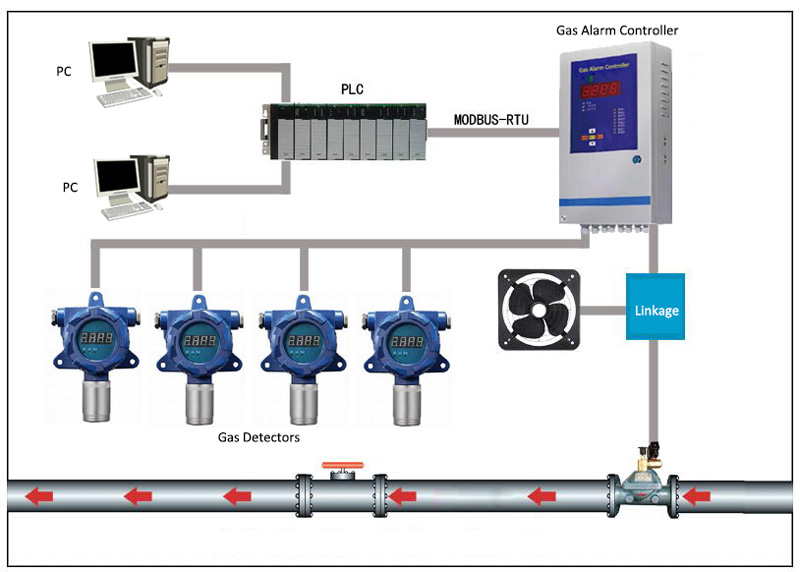4 Tips for Installing a Fixed Gas Detector
Fixed gas detector is mainly used in workshop, workshop, laboratory and other places that need to detect gas leakage. So the proper installation of the fixed gas detector will safeguard the life of workers. The following are some tips for the installation and use of the fixed gas detector for your reference.
1. Choosing where to install a fixed gas detector
Where should a fixed gas detector be installed? We need to know the onsite situation and figure out where the gas leakage generates such as pipe joints, valves, raw material locations, and air flow direction. We need to consider these factors carefully before installation. The fixed gas detector cannot be installed randomly, otherwise it is completely useless.
2. Detecting distance of a fixed gas detector
How far can a fixed gas detector monitor? This question is often asked by users, and it is misunderstood that the fixed gas detector can detect the gas leak for a long distance. In fact, this view is wrong, since the gas detectors, especially the fixed-type gas detectors are generally diffusion type. In other word, only when the gas leaks and diffuses to the sensor of the gas detector can it detect the concentration. Take a simple example: the human sense of smell is a very sensitive organ that can smell the trace gas above ppb level in the air. However, sometimes we need to get close to smell, and sometimes we can smell very far. This is due to the air flow direction and concentration ratio.
When the gas is dissolved in the atmospheric air, it may not be detected by the nearby gas detection equipment due to the flow of the wind. As the gas flows, the farther away from the gas leakage point, the lower the gas concentration. So the gas concentration detected far away within safety level does not mean that all locations are safe. There is no strict standard for how far to install one gas detector. Only a reasonable layout is made based on the location of the hazard sources on site. It is suggested to install one fixed gas detector in a large area of 20m2, or install a detector within 10-20 meters.

3. Environmental conditions of installing a gas detector
The gas leak detector has its own requirements for the environmental conditions including humidity, temperature, pressure and other basic conditions. Generally, the factory environment is appropriate and the gas detector can be installed directly. However, when installing the gas detector in the confined space, such as pipe, flue and other special environments, we should take the conditions into consideration. Most of gas detectors, no matter what brand it is, can adapt the conditions: room temperature from -20 to 50 degrees, humidity less than 90%RH without condensation, and pressure within 100kPa. Once the gas detector doesn’t work in such these environmental conditions, the measurement accuracy and service life can be affected. At this time, the gas pretreatment equipment shall be added to make the gas treatment to ensure the gas to meet the conditions and then enter the gas sensor.
4. The effect of excessive dust in the installation position
If the dust is too large, it will easily cause the gas sensor to block, and the detection accuracy will decrease. Therefore, once the gas detector is used in the high dusty environment, the dust need to be filtered. Regular dust cleaning can be made depending upon the situation. Don’t wash the detector with water, or wipe with alcohol. Use a clean and soft cloth to clean the gas sensor.

